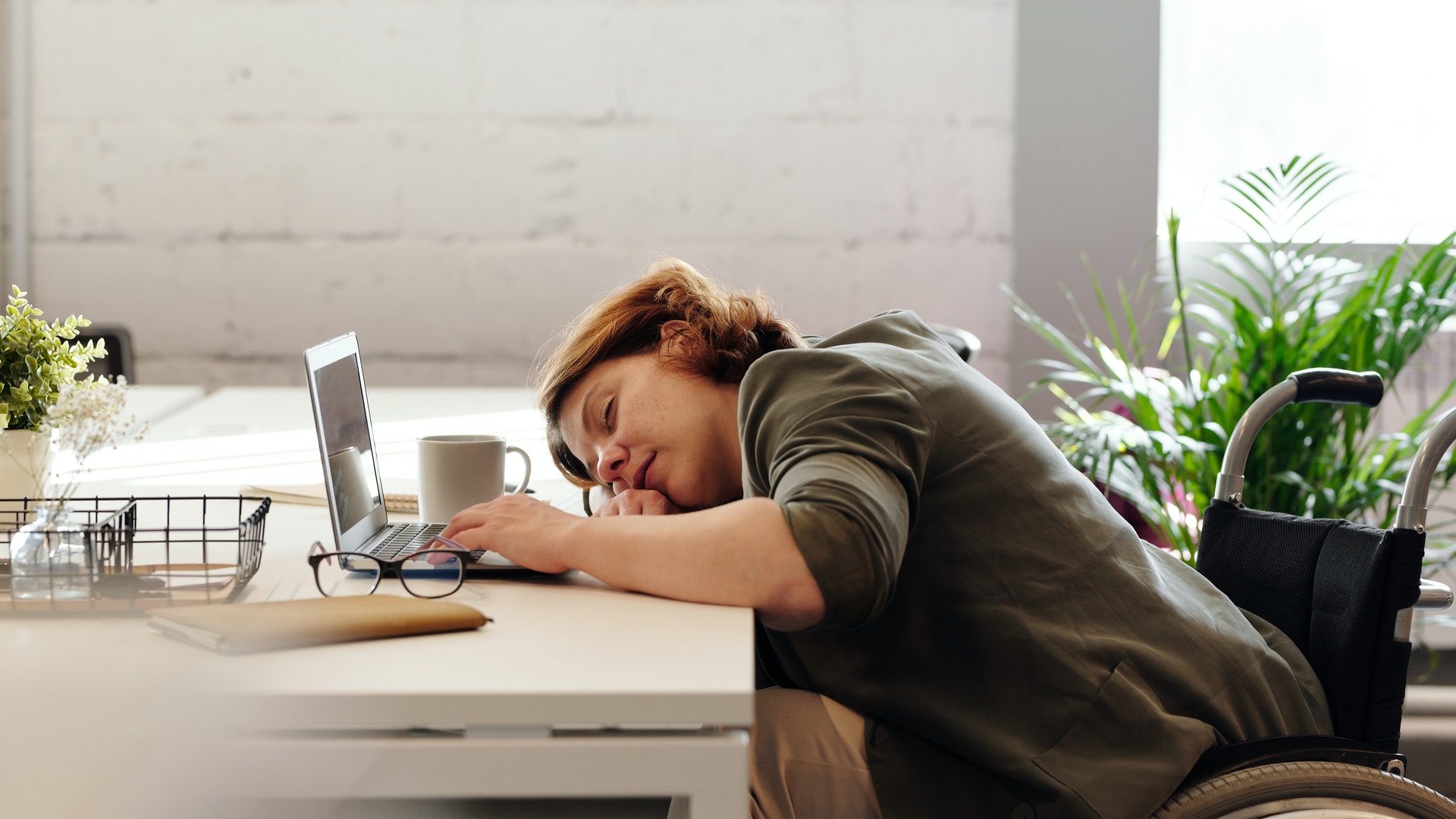
Why Working From Home is Resulting in Poor Sleep
The occasional bout of insomnia is far from unusual. Somewhere around 33% to 50% of adult Americans experience insomnia to some degree. However, over the past couple of years, the number of people experiencing insomnia has skyrocketed.
In the months after COVID first hit in 2020, Google searches for “insomnia” in the United States increased by 58% compared to the same time period over the previous 3 years. There’s plenty of evidence that this surge in insomnia was not confined to the United States. A study in Italy found that nearly 20% of Italians were experiencing insomnia, compared with 7% during more normal times. A study in the United Kingdom found that in a sample group, the percentage of those suffering from insomnia increased from 16% to 25%.
Why did so many more people start experiencing insomnia? Obviously, the beginning of the pandemic was accompanied by stress levels that were much higher than normal. But there was another significant contributor to the frequency of sleep disorders.
Working from home breaks down the mental division between work time and home activities–including sleeping.
For those who work office jobs, they tend to have very structured, daytime work schedules–something along the lines of the typical Monday through Friday, 9 AM to 5 PM office job. This lends itself to a very predictable, structured lifestyle. You wake up, you get the kids off to school, you start to get into the work mindset as you drive to work, you work, you have lunch, you work some more, and then you go home, with that drive back home serving as a segue back into home life.
When your work life is structured and predictable, the rest of your life tends to be predictable as well. And that includes when you go to bed and when you wake up.
COVID–and the resulting shift from working in the office to working at home–broke that structure. Office workers got up, and had nowhere to send their kids, and sat down at the kitchen table, or in their newly outfitted home office, and even in their bedrooms, and tried to find the focus that they used to take for granted.
You may have had that experience–having to take frequent breaks to move your kids out of your workspace, or sit down and help them with remote schoolwork, while also getting distracted with other household needs, such as laundry, dishes, pet care, and so on. This in turn left you with work time to make up for, so after having dinner and getting your kids to bed, you find yourself sitting in front of your computer again at 8 PM or 10 PM or later.
Lack of work-life structure leads to poor sleep hygiene, which in turn leads to insomnia–or as some researchers have dubbed it recently, “coronasomnia.”
As COVID progressed, workers tended to get increasingly more casual about how they went about their days. Pajamas became day wear. Depression, stress, and anxiety became the status quo. And for many, the opportunity to work from bed became too much to resist.
Working from bed is a prime example of what sleep researchers call poor “sleep hygiene.” Our brains are association machines. We are constantly building and expanding on associations between people, places, objects, actions, and so on.
You see a burger in a commercial and you feel hungry, because your brain associates food with hunger. You remember a teacher from grade school whom you hated and you feel anxious, because that’s how they made you feel.
And when you look at your bed, and more importantly when you lie in it, you should feel tired. That’s because you typically lie down in your bed when you feel tired. That, in turn, should lead your brain down the path towards sleep, because that’s how you’ve trained it all your life: you feel tired, you lie in bed, and you relax and fall asleep.
But if you instead start working in bed, you start building new associations. This is especially the case when your work hours become more unpredictable, and more and more often you’re climbing into bed at 11 PM, not to sleep, but to pull out your laptop and catch up on work.
This changes how your brain thinks about your bed. Instead of bed equaling tiredness, and subsequently, sleep, it instead starts being associated with working, and thinking about work, and the stress of work. You may also have started indulging in other bad habits, such as looking at your phone while lying in bed.
Consequently, when you are tired and ready to go to sleep and you crawl into bed, your brain instead starts thinking about work. This, unsurprisingly, leads to insomnia.
As noted above, insomnia became much more common with the onset of COVID. So much so that this new surge of insomnia has been dubbed by some as “coronasomnia”–insomnia brought on by the combination of stress, lack of boundaries between work and home life, and other losses of structure which resulted from the response to COVID.
Having a structured daily routine is key to getting your sleep schedule back on track.
Thankfully, it is possible to reverse the damage inflicted by the lack of structure that became the norm for many post-COVID. Sleep researchers have a variety of recommendations for those suffering from insomnia, including:
- Get exercise during the day to reduce stress and tire your body.
- Avoid naps, so as not to throw off your sleep cycle.
- Get sunlight exposure by going outside during the day, helping to reinforce circadian rhythms.
- Reduce news and social media intake, which for many can become addictive and lead to the desire to continue checking in instead of sleeping.
- Stick to a routine. Get up at the same time every day, take breaks at the same time, and go to bed at the same time. When you get up in the morning, get dressed. Don’t succumb to the temptation to wear your comfiest pajama pants all day.
- Don’t work in your bedroom. Find a more neutral space, such as the kitchen table, at which to work.
- Develop a consistent evening routine. Don’t work late or get involved in demanding activities shortly before bedtime. Do things which are relaxing, and allow you to wind down.
- Avoid your phone when in bed. Exposure from the blue-shaded light produced by phone screens has been shown to keep the brain engaged and discourage the production of melatonin, a hormone that regulates the sleep cycle. If you need an activity to help you transition to sleep, try reading a book instead.
- If you can’t sleep, get out of bed. If you’re awake for more than half an hour, get up and find a mundane, quiet activity to preoccupy and relax you. When you feel suitably tired, go back to bed. Again, you don’t want to create an association between your bed and wakefulness.
Thankfully, with COVID receding and an increasing number of offices reopening, it’s becoming easier for workers to reestablish healthy work-life balances which are conducive to good sleep.
If your workplace is slowly resuming normal operations, you may want to consider requesting that you be among the first to go back to the office. If your office is adopting a hybrid work model and doesn’t have sufficient office space available, it may be worthwhile to explore the possibility of utilizing third-party office space or coworking space. For many, having a work environment that is entirely separate from their home is crucial to creating a divide between home life and work life.
There are a variety of different ways you can get back into a predictable, structured work-life groove, and get the good night’s sleep you need to have a productive day. Explore the tips above, and find what works best for you.


